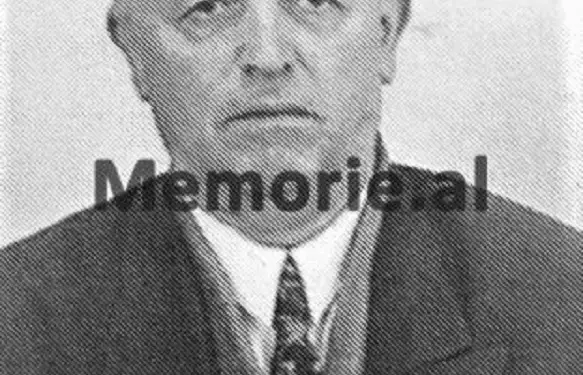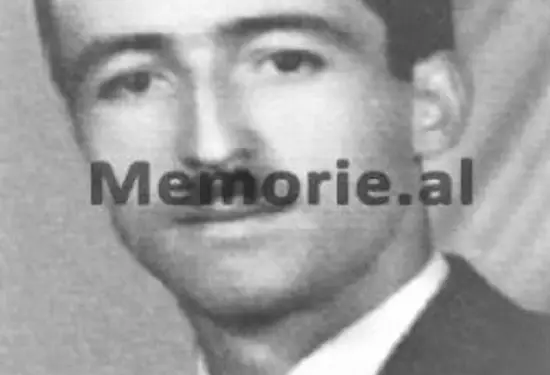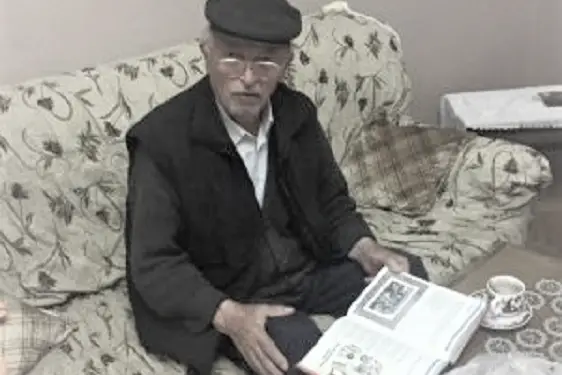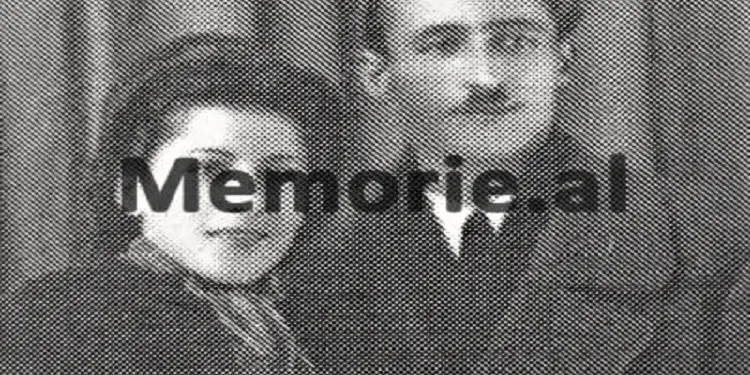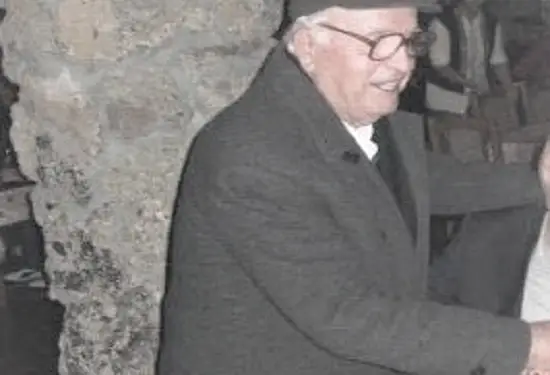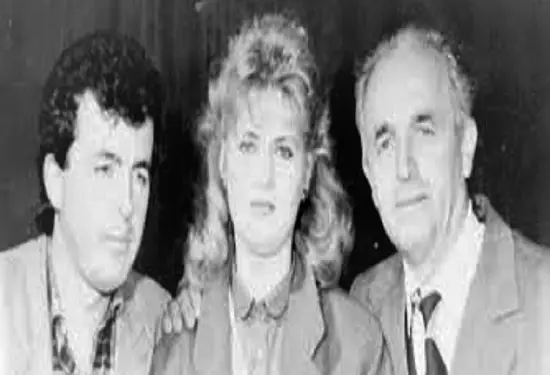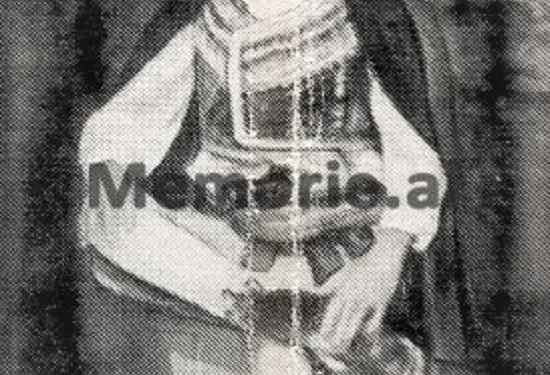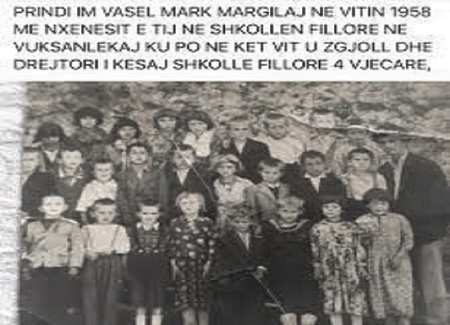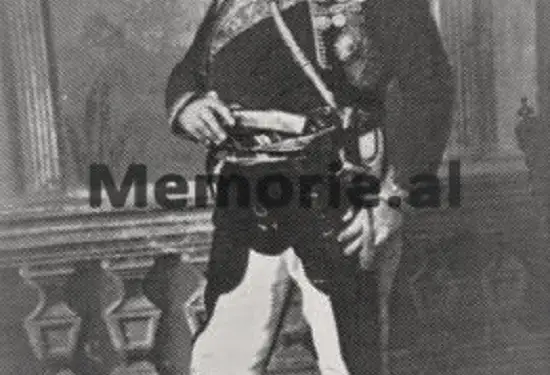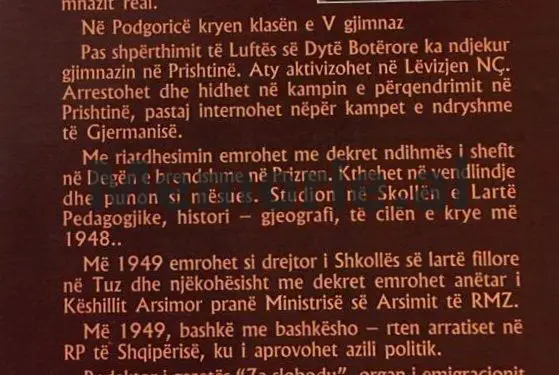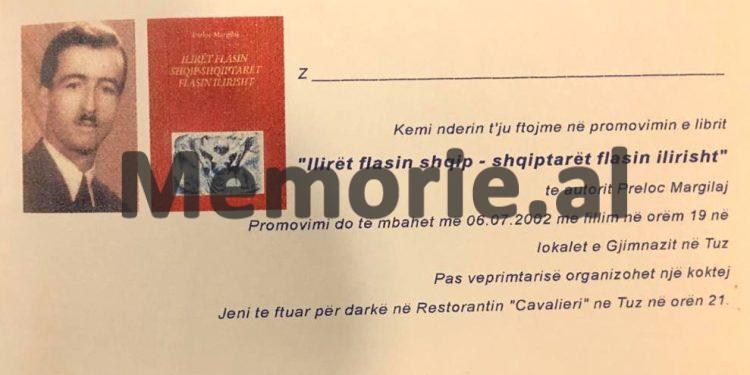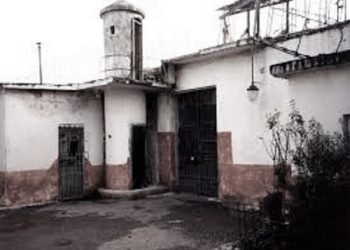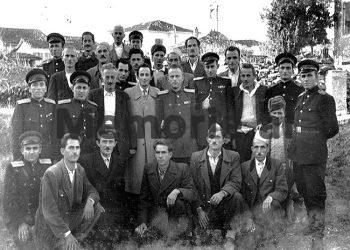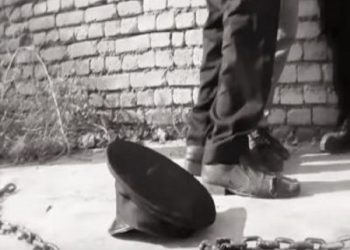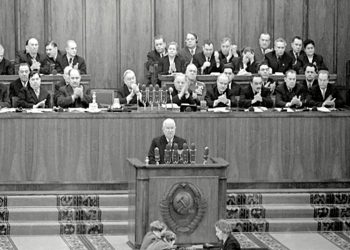Dashnor Kaloçi
Memorie.al publishes the unknown story of the large Margilaj family from the Albanians of Triesi, Montenegro, who have been known since the time of the Ottoman Empire, when they went to the aid of the Bushatllins of Shkodra in their wars against the armies of Kurt Pasha… Margilaj family conflicts after 1944 with the Titoist regime and the escape of two brothers, Preloc and Gjoka, who came to Albania with their families, first settling in the newspaper “Za Sloboduu” (a body of Yugoslav political immigrants). in Albania) and Radio-Tirana as editors and speakers of the Serbian language, from where they were later interned for ten years in the villages of Myzeqe, after expressing their dissatisfaction with the communist regime of Enver Hoxha. Vasel Margilaj’s rare testimony about his brother Preloc, who applied after his sentence and was repatriated to Montenegro in 1972, where he served as a history teacher and in 2003 published his voluminous work, “Albanians speak Illyrian”, which was highly praised by scholars and historians, as a book with extraordinary values for Albanian ethnogenesis.
“At the end of June 1856, Montenegrin army forces approached and surrounded Triesi, wanting to burn it, just as they burned and destroyed all the houses in Kuçi where they slaughtered children in the cradle. On June 28, the Montenegrins approached the center of Triesi without encountering any resistance, and seeing no one there, they remembered that the Trinitarians had left for fear of the mountains. But as soon as their commander approached the door of Mark Gila’s house, which was then 78 years old, he picked it up and shot him in the mouth with two bullets, leaving the Montenegrin commander dead. After that, all the men of Triesi came out of their positions and a fierce battle began, in which 72 Montenegrin officers and soldiers were killed, who were buried there next to the houses of our Margilaj brothers, putting a stone in each of them. to the grave. Those 72 stones have stood there for nearly 100 years and were removed from there in 1945, when Yugoslav leader Marshal Josip Broz Tito began propagating the idea of Brotherhood. They were removed from there so that the presence of those graves would not remind the inhabitants of those parts of the old conflicts and quarrels between Albanians and Montenegrins. This is how Vasel Margilaj, one of the last suckers of the largest Albanian family from Trieshi, Montenegro, who told us the whole story of his ancestors who fought, recalled that distant story told in several generations. almost 500 years against the Turks and Montenegrins, since Gegë Doshi, the son of Dosh Lulashi, who was killed in the city of Shkodra in the early 17th century, fighting against the forces of Kurt Pasha, until the last, Preloc Margilaj, the famous researcher of the ethnogenesis of Albanians who is also Vasel’s older brother, who passed away four months ago after suffering for almost 10 years interned by the communist regime of Enver Hoxha in the fields of Myzeqe. But who is the tribe of Margilaj and what is their origin? Who are the men of the trunk of that family who has made a great name in the history of Albania by fighting against the Turks and Montenegrins? What are Margilaj’s connections with the famous general, Sokol Baci, who organized and chaired the meeting in Korita of Triesi, where together with Dedë Gjon Luli, Isa Boletini, Mehmet Shpendin, Bajram Curri, etc., they drafted the famous Greca Memorandum, asking Istanbul for Albania’s autonomy? Who is Preloc Margilaj and why did he leave Trieshi while fleeing to Albania in 1951, and how was he interned in forced labor camps for 10 years by the communist regime of Enver Hoxha? Regarding these and many other events, evidence, facts, and other stories from the trunk of the Margilaj family, Vasel Margilaj, who lived in Tuz, Montenegro, a well-known historian and researcher of those three Albanian territories under Montenegro, introduces us. which, among other things, has opened the first Albanian school in Triesh, naming it “Gjergj Kastriot Skënderbeu”.
The origin of the Margilaj
Regarding the origin of the Margilaj family and who were the first of that family to make a name in history, Vasel Margilaj testified: of our ancestors is from Trieshi. For the first members of our family there are archival documents and data. Among them is Dosh Lulashi, who was born in the early 17th century and was a close friend of the Bushatllins, a friendship his family has maintained for decades. Dosh Lulashi, lived until the age of 96 and died there at the end of 1700. Doshi had two sons: Gegë Doshi, who was killed in Shkodra because where he had gone to fight against Kurt Pasha’s army to help the Bushatllins. and his other son, Gil Doshin, who died in Edirne, Turkey in 1779, as he and his two sons, Mehmet Pasha Bushatlli, went to suppress an uprising by the Greeks. After his death, his close friend Pjetër Vakacaci, who served as his bodyguard, buried his body in Edrene. He brought the clothes, the weapons, and the horse to Triesh. On the day when the family was waiting for consolation and was organizing the funeral ceremony of Gila, near the mortuary and his weapons, the horse approached him, which immediately collapsed to the ground dead. After that, Karamahmut Pasha, who was also a friend of our family, ordered Gila’s horse to be buried with all the honors bestowed on a fallen soldier. And so it happened, as the horse was buried with the same ceremonies as its master Gila.
Margilaj, leader of the Albanians of Trieshi
But how does the history of the ancestors of the Margilaj tribe continue over the centuries? Regarding this, Vaseli Margilaj testified to us: “Before he was killed, Gil Doshi (son of Dosh Lulashi), who was the leader of the Triesi highlanders and commander of the Turkish Army in the fight to suppress the Greek uprising in Edrene, he was also well known for the war he waged in 1770 in Podgorica, where he was commander of the highlanders of Gruda, Hoti, and Triesi, against the forces of the Montenegrin Army. According to archival sources published in the History of Montenegro, 12 Montenegrin soldiers were killed and 60 others were wounded in that war. Gil Doshi was also very well known for what he did to save the life of his probation (brother who had drunk blood) when he went to be supplied with gunpowder to the Vizier in Shkodra. At the time as Gil Doshi on horseback with his companion, Pjetër Vuksani, were passing near Arra e Madhe, they saw a large crowd of people gathered somewhere far away from them. Curious, Gila asked some shopkeepers why those people had gathered there, and they, unaware of who he was, replied that the probate of Vriesvoda (commander) of Tries, Gil Doshi, would be hanged there. How he got this answer, Gila told his companion, that something was happening and he had to run after him. Gila hurried to the horse, and when he approached, he entered among the crowd, and, breaking through the siege of the Turkish gendarmes, approached and drew his sword and cut the rope of his probation, which they had just removed from the stool. After that, Gila told the probationer who had been sentenced to death after he had killed two Turkish soldiers, to flee home, as he would talk to the Vizier. After that, Gila goes to the Vizier, who accepted his request to forgive his probation “, said Vasel Margilaj, one of the legends about the first members of the family of his trunk, events which are known not only the memory of generations but also from the archives of Istanbul and Montenegro.
The murder of Preloc Margilaj
According to Vasel Margilaj, Mar Gila, who killed the Montenegrin Vojvodina in Triesh at the age of 78, where 71 soldiers and other officers were killed, had a son named Preloc Marku. Regarding Preloc and his descendants of the Margilaj tribe, who inherited the role of the Commander (Vojvoda) of Triesi in the war against the Turks and the scythe, Vesel Margilaj said: “Mar Gila’s son was called Preloc Marku and is our grandfather, Mark Tom’s father. Margilajt, who is our father. Preloci, who was born in 1874, inherited the place of the Commander of the Trieshas who held the trunk of our family, and he lived until 1876, when he was killed by the Montenegrins who had attacked Kuçi and Fundnën. Three days after the assassination of Preloc Marku, Montenegrin forces occupied all of Triesi, forcing all the villagers of that province to move from there and settle in Guci, Vuciterna, and the western lowlands of Albania, where their descendants still live today… After the death of Preloc Margilaj, as the first of our tribe, he remained his son, Tom Preloci, who is our grandfather. Toma lived for some time in the Cem Valley, where he married the daughter of the famous general, Sokol Baci, Gjelina. Toma lived to the age of 78 and died in Shkodra in 1927, where he was buried. Toma had a son, Marka Tom Margilajn, who is my father, who was born in 1893 in Triesh, and after finishing primary school there, for some time until 1917, he worked in Podgorica, in the shops of Sokol Baci. Our father Toma has taken part in the wars against the Turks since the age of 17 and after the First World War, he went to Italy where he stayed for three years and received the ranks of the officer. After returning from Italy, Father Marku came to Triesh, where he inherited the place of his father Thomas, as commander of the Highlanders of Tresh. Shortly after the invasion of Albania, around 1941, our father Toma was summoned several times to Tirana by Mehdi Bej Frashëri, Ernest Koliqi, Mul Delia, etc., personalities of that time, who knew and respected Mark as the first of Tries, but he did not accept any official post or office. Mark spent the last years of his life in Tuz, where he died in 1979 “, Veseli told his father Marku, who was the last suckling of the Margilaj family, who inherited the place of his ancestors, as a leader and commander. of the Trinitarian Highlanders in the wars against the Turks and Montenegrins.
Arrival in Albania and internment in Lushnja
How did the events unfold afterward with the men of the Margilaj family and the sons of Marka Toma, Preloc, Gjoni, Gjoka and Vaseli? In this regard, Vaseli wants to talk more about Preloc, his older brother, who passed away a few years ago, just a few days after he published his book of praise, “Albanians speak Illyrian”, which has been praised. by scholars of albanology and historians, as one of the monuments of ethnogenesis of Albanians. But what is Preloc’s past and why was he interned by the communist regime of Enver Hoxha? In this regard, Vaseli recalled: “Our elder brother Preloci was born in Triepsh in 1924 and after graduating from a primary school in Tuz, he continued his studies at the Kragujevac Technical-Military Institute and then completed his seminar in Danillovgrad. During the period of the Nazi-fascist occupation of Albania (1939-1944), Preloci went to Kosovo where he attended classes at the gymnasium of Prishtina, and during that time he became closely associated with the Anti-Fascist Movement. At the time, he was arrested by the Germans and, after being held for some time in an internment camp in Pristina, was sent to German camps, where he was released only after the Anglo-American allies intervened. After being released from Nazi camps, Preloci returned to Kosovo where he was appointed deputy chief of the Prizren branch of the Interior Ministry. Seeing the difficult situation in which the Albanians were treated there, Preloci left Kosovo and returned here to his hometown, where he was appointed a teacher in the primary school of Tuzi. At that time Preloci continued at the Higher Pedagogical Institute for History-Geography and graduated in 1948. In 1949, he was appointed Director of the Tuz Primary School and a member of the Education Council at the Ministry of Education of the Republic of Montenegro. That same year, Preloci and his wife, Angelina, fled Montenegro, seeking political asylum in Albania, which aggravated my situation here in Tuz by constant surveillance and surveillance by Yugoslav secret services ( UDB) who saw me as an enemy, as I had two brothers, Gjoka and Preloc, who had fled to Albania. After official Tirana granted political asylum to Preloc and Angelina, they settled down. Preloci was appointed editor of the newspaper Za Za Slovodu, which was a body of Yugoslav immigrants in Albania, and Angelina was appointed speaker at Radio Tirana for the Serbian-language show. at that time Preloci enrolled and took the exams at the Faculty of History and Philology of the University of Tirana, which he failed to complete, because he was interned after he began to speak out against the policy being pursued by the communist regime of Enver Hoxha. After that, Preloc and Angelina were interned in forced labor camps in Myzeqe, where they stayed for ten years working in the most difficult jobs. In 1972, Preloc and Angelina were sentenced to ten years in exile and seeing the dire conditions in which they lived in those years, incomplete disappointment, they were forced to make a request to return to their homeland. , in Montenegro. Based on a policy of mitigation that had begun at the time between Yugoslavia and Albania, Preloc was granted a repatriation request. After returning to his hometown, Preloci lived in Podgorica where he devoted himself only to studies on the ethnogenesis of Albanians. After several years of work, he managed to complete that study only last year, and when only a few days had passed since the book was published, his wife, Angelina, passed away. Her death was a blow to Preloc, as they were closely related to each other and had lived a life of many vicissitudes. Based on this, Preloci seemed to no longer want to live and passed away only a few days later “, Vasel Margilaj tells about his brother Preloc and his whole family trunk originating in Trieshi, one of the most famous Albanians of Montenegro.
The book “Albanians speak Illyrian”, by Preloc Margilaj
A voluminous and very luxurious book entitled “Albanians speak Illyrian”, author Preloc Margilaj, which was originally published in Montenegro and recently distributed in all cities of Albania, prompted us to work with Gjok Margilaj, his brother. of Preloc, who has lived for years in the city of Fier, to take the road to Tuzi, to meet the other brother of the author of the book who passed away recently, in order to learn something more about the history of this family, one of the oldest and most heard by Albanians in Montenegro. Also one of the goals of our trip to Tuz is to know the life of Preloc, the author of this book, which scholars of albanology and well-known historians Sherif Delvina and Hysni Myzyri, consider superlative, considering it as one of the largest monuments of Albanian ethnogenesis. Vasel Margilaj, who still lived there in his native lands, was found on his home in Tuz, not far from the center of the small town populated by nearly 8,000 indigenous Albanians, located there in the depths of the centuries. In that house where the embroidered Albanian flag stands out immediately, Vasel Margilaj lived alone with his mistress, because recently, two great misfortunes had struck that family, detaching them prematurely from life, the two sons and them, Mirashi and Sokolin. After the well-known mountain hospitality offered to us by that family, which preserved with great fanaticism the customs of their ancestors as well as all the inhabitants of that province, after learning the purpose of our visit, Vasel Margilaj together with his son his Noshin, who graduated from the University of Prishtina and lived nearby with his wife and three children, invites us to visit the Triesi highlands.
In Triesh, in the lands of the fist of Margilaj
In these places are the ruins of the lands of that old family with ancient patriotic traditions, as well as the graves of the ancients. As we were traveling in the direction of Triesi, which is a few kilometers away. away from Tuzi, and bordering Hoti, Gruda, Kelmendi, Rakona, Koja, and Fundna, on both sides of the road winding at the foot of Deçiç Mountain, wherein 1907, Ded Gjo Luli fought and raised the Albanian flag, Vaseli told us some abandoned houses. He could not hide his concern about the abandonment of those villages and the flight of Albanians from their lands, which they have washed with blood over the centuries. Throughout the trip on both sides of the road to Triesh, no one could see, as their residents had emigrated to the United States. After this journey of about an hour, we arrived in Triesh, where no one lived in its old houses. Vasel Margilaj and his brother Gjoka told us about the ruins of the foundations of the houses of their ancestors, which date back to 1100, and Margilaj’s brotherhood has lived for centuries. In these foundations, hewn stones like those of ancient castles stand out. Regarding what those old walls may have been, some of which were so carefully built, Vaseli could not tell us anything accurate, as according to him “it is the work of specialists and archaeologists.” But he said that research and excavations had not been carried out deliberately over the years, as there may have been no objects of interest to Montenegrin archaeologists. Just a few meters away from the settlements, Vaseli told us that 72 Montenegrin officers and soldiers were buried there, who was killed fighting with Margilaj in Triesh in 1856 after they tried to burn it and destroy it as well as Kuçi, where they killed children and cradle. According to Vaseli, those 72 stones remained there for almost 100 years and were removed from there in 1945, when Yugoslav leader Marshal Josip Broz Tito began propagating the “Union-Brotherhood” policy. After that, Vaseli took us to see the village school, where “Gjergj Kastriot Skëndërbeu” is written in Albanian and Serbian. Regarding the construction of this school in the early 1950s, he told us that he came before the communist leader of Montenegro, Blallao Jovanovi kërkuar, insisting on this, on behalf of all the Albanians of Triesi…A little further on, that school, which unfortunately has been left desolate because no more students study there, Vaseli accompanied us to the church of the village where he was buried for the first time in the Albanian language, just when the school was opened, always after his insistence on a patriotic brother, who served there in those years. Continuing the way further, rare fabulous beauty of the Cem Valley appeared before our eyes, with the canyons descending on that river and foreign tourists have rightly called it “Albanian Colorado”. On the way back, Vaseli also showed us the long mountain road, which crosses the Cemi River from above, in front of the province, opposite the province of Gruda, a road that would allow for a shorter time for Montenegrin Albanians to move towards Kosovo. That road was opened only with the initiative of Vaseli, who had gone to the US three times, where he collected the financial contributions of the Albanians of Triesi who lived and worked there as immigrants (nearly 2 million dollars) and after returning to Tuz, together with the two boys got to work bringing heavy modern machinery and made it possible to build this road in less than two years./Memorie.al




